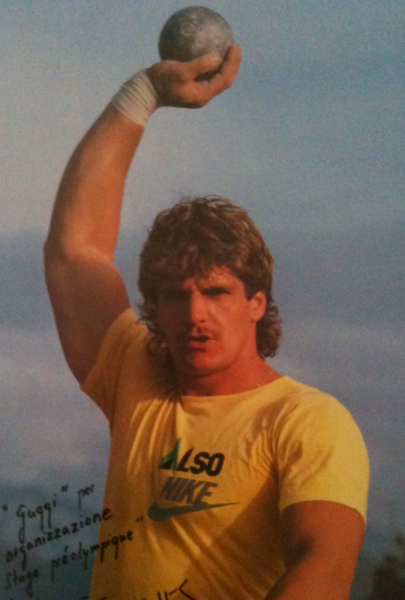The other day I used a sweet picture of Werner Günthör. In an effort to teach all the newer readers, here’s a post I wrote in 2010 about him (with minor edits).
Meet Werner Günthör, a powerful athlete from Switzerland. Günthör was an athletic shot putter who stood 6’6″ and weighed close to 300 pounds of pure 70’s Bigness (this website lists him at 130kg). His best put was 22.75 meters in 1988 in Bern — that’s about 74.5 feet. Günthör won a bronze medal in the 1988 Olympics as well as three world championships in the late 80s and early 90s. He also won an indoor world championship and European championship. You can find videos of Günthör training on YouTube. His training was awesome, and here’s my favorite video (the last sequence is the best):
How awesome was that? It’s not a bad idea to model conditioning work after Günthör’s plyometric training, particularly jumping and bounding. Ease into these movements, especially if you haven’t done them since high school athletics; plyometrics will initially be stressful on the joints and soft tissue.
Here is another video of Günthör and who I assume is his training partner. The whole video is an impressive showing of athleticism and displays the old school mindset of including related physical conditioning to training.
Ladies will want to fast forward to 1:43.
More intense plyo training at 2:38.
3:33 is the start of a hilarious montage of Günthör doing all kinds of awesome things, including playing tennis. You can’t really get an idea of how massive this guy is until he wedges a racket in his fist. There’s another really funny part that I’ll let you see for yourself, so this would be the best part of the video if you were strapped for time.
Günthör is one of my favorite athletes because of his explosive training and awesome style. A 70’s Big man indeed.



